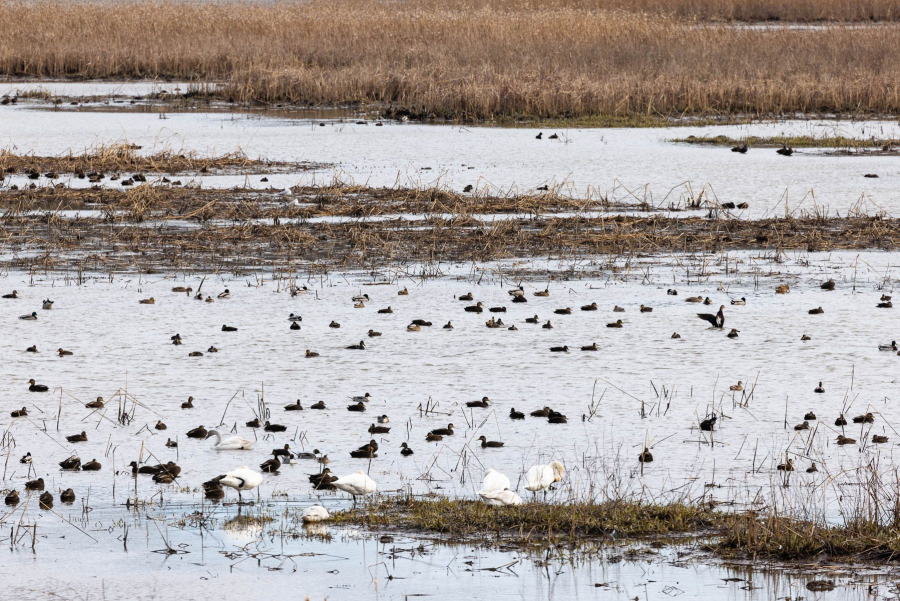Wetlands see a small but mighty increase across the Chesapeake watershed
New Chesapeake Bay Program tracking tool expands data collection

Marshes, vernal pools, living shorelines, bogs, swamps—did you know that each of these landscapes are considered to be wetlands? Wetlands are primarily defined by their soil type and the kinds of vegetation that grow there. They can be found along the Bay, where they contain brackish or salty water, or throughout the watershed with fresh water. The bottom line though is that wetlands play an incredibly critical role in keeping the Chesapeake Bay and its tributaries clean and healthy.
Unfortunately, our wetlands are in trouble. Increasing development, especially along the shorelines of the Bay, climate impacts like sea level rise and the introduction of invasive plants and animals are causing our wetlands to disappear. So, when updates to our Wetlands Outcome recently showed a small increase in the number of acres throughout the watershed in the past eight years, it was a reason to be optimistic.
“Without our wetlands, the residents of the Chesapeake Bay watershed would see a rapid decline in their quality of life,” says Nancy Schumm, vice-chair of the Chesapeake Bay Program’s Wetlands Workgroup and chief of environmental services for the city of Gaithersburg, Maryland.
A new tool released by the Bay Program last year gives us a better understanding of the amount of wetlands gained across the watershed. Habitat Tracker collects data for wetlands that are created, restored and enhanced. Previously, wetlands data were collected through the National Environmental Information Exchange Network, but only for those that were created or restored for the purposes of meeting water quality goals.
When a wetland is enhanced, it means that one or more functions of an existing wetland is improved. Think about taking an action to improve a wetland’s ability to attract more waterfowl. With the addition of enhanced wetlands data, along with that for created and restored wetlands, we’ve seen an increase of 4,310 acres of wetlands across the watershed in-between 2014 and 2022. This is a 5.1% increase of the Chesapeake Bay Watershed Agreement target of creating or re-establishing 85,000 acres of tidal and non-tidal wetlands by 2025.
The Wetlands Workgroup is also working to improve the function of 150,000 degraded wetlands by 2025. This latest data shows that 60,666 acres of wetlands have now been enhanced across the watershed—meeting 40.4% of this goal.
“We need to keep a focus on this important work to offset historic losses and anticipated impacts due to development and sea level rise,” said Pam Mason, chair of the Bay Program’s Wetlands Workgroup and professor at the Virginia Institute of Marine Science.
Wetlands provide crucial habitat for fish, birds, mammals and invertebrates while supporting recreational hunting and fishing. They trap polluted runoff and help slow the flow of nitrogen, phosphorus and sediment, as well as toxic contaminants into waterways. And they also help mitigate climate change impacts by soaking up stormwater, dampening storm surges, slowing the erosion of shorelines and protecting properties from flooding.
“Wetlands are a cornerstone of the Chesapeake Bay, offering so many benefits to its wildlife and people,” said Tess Danielson, co-chair of the Wetlands Workgroup and environmental protection specialist at the District of Columbia’s Department of Energy and Environment. “We cannot overlook the restoration of these critical habitats.”

Comments
There are no comments.
Thank you!
Your comment has been received. Before it can be published, the comment will be reviewed by our team to ensure it adheres with our rules of engagement.
Back to recent stories